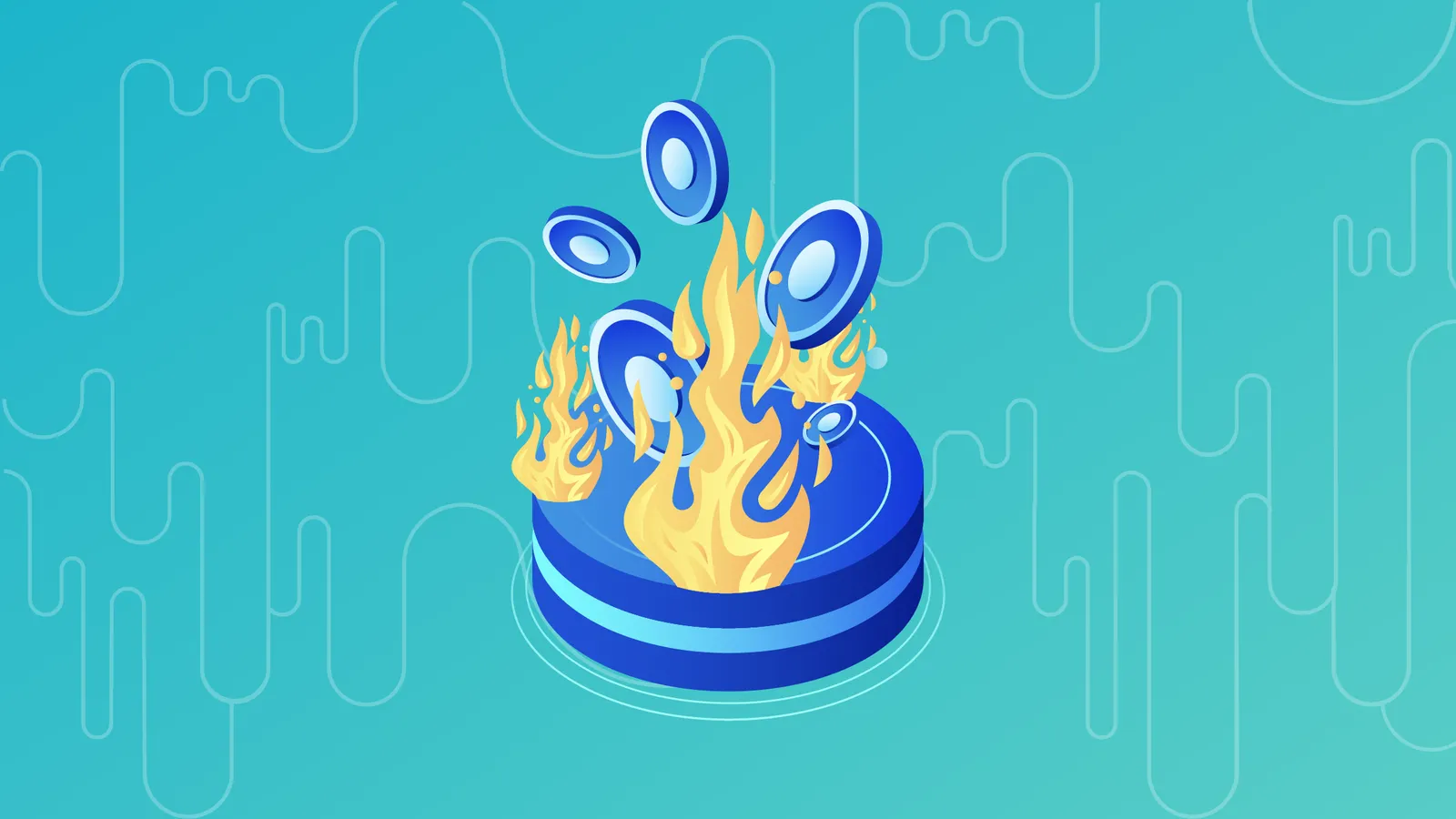Burning cryptocurrencies and NFTs is comparable to setting cash or art on fire, although the process is a bit more complex than lighting a match.
But why would a crypto project want to destroy its own tokens? There are a number of reasons, which we’ll explore in this article.
What is a token burn?
First up: what does a token burn actually entail? The act of burning a digital asset involves sending it to a place from which it can never be retrieved, also known as a burn address, which effectively removes the digital asset from circulation by locking it up for eternity.
A burn address is a digital wallet that can’t be accessed because it doesn’t have a private key attached to it, like a lock that someone never built a keyhole for. Burn addresses are also sometimes referred to as eater addresses.
Sending a token to a burn address effectively removes the digital asset from its overall supply, locking it up in the hands of nobody and preventing the asset from ever being traded again.
Burning tokens can lead to an increase in the price of those tokens that are still in circulation. An asset’s price can be thought of as a relationship between supply and demand. If there’s less of an asset available to investors than there is demand for it, the asset will command a higher price as it’s traded. Inversely, if there’s an abundance of an asset that doesn’t meet the demand for it, the asset’s price will often fall.
By reducing the supply of tokens, burning tokens can create an imbalance in relation to demand that usually moves the price of the token upwards because of the asset’s increased scarcity.
Why some protocols burn tokens
On occasion, crypto projects will burn their tokens in much the same way that companies buy back their shares, absorbing the cost of stocks and returning value to investors in the form of a higher price for the security. For this reason, a project burning tokens can be interpreted as positive news, but it doesn’t always have an immediate effect on prices.
That’s because some token burns are automated to happen regularly or are disclosed well in advance, and are effectively priced into the value a token trades at well before the burn takes place. It’s also possible that other news regarding a digital asset can have a more outsized effect on any price movement.
Ethereum, the second largest cryptocurrency by market capitalization, has looked to burn mechanics as a method of transitioning users over to its new proof-of-stake network from proof-of-work. EIP-1559, an update introduced in August 2021, burns Ethereum gathered from fees associated with verifying transactions on the network. To date, it has removed $2.9 billion in Ethereum (2.5 million ETH) since it was introduced, according to Watch the Burn.
Bored Ape Yacht Club creator Yuga Labs’ Otherside metaverse project resulted in $157 million worth of Ethereum being burned as customers rushed to mint Otherdeed NFTs.
Another cryptocurrency that's introduced a burn mechanic is meme coin Shiba Inu (SHIB). In April 2022, Shiba Inu developers launched the SHIB Burning Portal, with those who choose to burn their SHIB tokens receiving another token, burntSHIB, in exchange, which pays out rewards in the ERC-20 token RYOSHI.
Some algorithmic stablecoins use burning as a method of keeping the asset pegged at a certain price. The mechanic works by burning tokens when the asset’s price is low to reduce supply and better match demand. Often, algorithmic stablecoins mint more of the currency to increase the overall supply when the opposite situation occurs.
However, the viability of the algorithmic stablecoin burn-mint mechanism has come into question since the collapse of Terra’s stablecoin UST in May, which saw the value of both UST and the LUNA token used in the burn-mint mechanism plummet to almost zero. To date, no stablecoin has been able to consistently maintain its price peg using only algorithms or burn methods.
Some blockchains use a system called proof-of-burn to verify transactions and reward miners that send cryptocurrency to burn addresses. Miners gain permission from the protocol to write blocks by sending cryptocurrency–which can be native to the blockchain or from others, such as Bitcoin–to the burn address.
Burning NFTs
As well as burning conventional crypto tokens, it’s also possible to burn non-fungible tokens (NFTs), with some NFT projects incorporating burn mechanics into their brands. Examples of NFT projects that have made use of token burn mechanics include:
- Burn.art - A project that uses a cryptocurrency called ASH, which is derived from burning NFTs, as an entrypoint to its marketplace. The project was created by the celebrated NFT artist Pak and allows users to burn their NFTs in exchange for ASH, potentially boosting the value of NFTs from the same collection that are still in supply and granting users access to the platform.
- WAGDIE - A collection of morose pixelated avatars that plays off of the popular phrase in the crypto community “we’re all going to make it.” As an unconventional marketing tactic, WAGDIE bought a Mutant Ape NFT that was worth thousands of dollars and burned it as a tribute to their project.
𝔏𝔢𝔱 𝔱𝔥𝔢 𝔞𝔰𝔥 𝔬𝔣 𝔱𝔥𝔦𝔰 𝔠𝔯𝔢𝔞𝔱𝔲𝔯𝔢 𝔟𝔢𝔠𝔬𝔪𝔢 𝔱𝔥𝔢 𝔰𝔱𝔞𝔯𝔱 𝔬𝔣 ℌ𝔢𝔯 𝔤𝔩𝔬𝔯𝔶. 𝔗𝔥𝔢 𝔯𝔦𝔤𝔥𝔱 𝔬𝔣 𝔦𝔱𝔰 𝔭𝔬𝔴𝔢𝔯 𝔰𝔭𝔩𝔞𝔶𝔢𝔡 𝔬𝔲𝔱 𝔞𝔠𝔯𝔬𝔰𝔰 𝔱𝔥𝔢 𝔈𝔱𝔥𝔢𝔯. 𝕷𝖔𝖓𝖌 𝕷𝖎𝖛𝖊 𝕳𝖊𝖗.https://t.co/U9G6HbkRFl
— 𝔚𝔢 𝔞𝔯𝔢 𝔄𝔩𝔩 𝔊𝔬𝔦𝔫𝔤 𝔱𝔬 𝔇𝔦𝔢 (@wagdie_eth) June 7, 2022
Ownership and personal control are at the crux of digital currencies and the ability to burn them is part of that. Being able to do what you want with your digital assets is key to the principles they were initially built on, even when that means renouncing your ownership of them in a way which ensures they can never see the light of day again.


